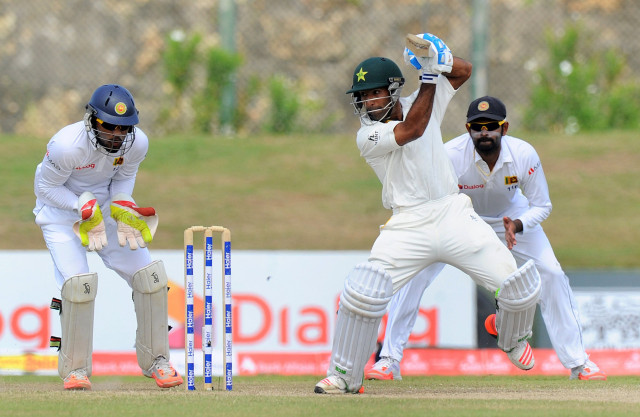Pakistan and their uninhibited aggression
Tests continue to be the only format in which the team has excelled in recent times

Winning is a habit: Pakistan have now won 123 Test matches, more than any other Asian side, edging India’s 122. Photo: AFP
Forced to go after the target, Pakistan come out of their shell. They win by five wickets. That was the day Pakistan, and more importantly Misbahul Haq, realised that they have the ability to attack teams out of games.
Something snapped that day, and a new Pakistan emerged — as new as a new Pakistan can be. A Pakistan that has been aggressive, a Pakistan that has shown intent, a Pakistan that has not been afraid of taking on the opposition.
The game plan is clear. Score as many runs and as quickly as possible in the first-innings and then choke the opposition batsmen. Only Australia (3.67) and New Zealand (3.5) have a better run-rate than Pakistan’s 3.46 since January 2014, and no team has a better economy than Pakistan’s 3.15.
While Sarfraz Ahmed’s 109 off 105 balls and Misbah’s record-fastest 57-ball 101 against Australia stand out, other players have also been visibly busier in the middle. In fact, all 10 Pakistani players bar none who featured in the first Test against Sri Lanka have improved on their strike-rates since that January, 2014 Test (Yasir Shah never played before that). The top seven’s average strike-rate has improved by more than 13, with those two men — Misbah and Sarfraz — again being the most prominent in this regard, improving upon their strike-rates by 14.83 and 28.86 respectively.
This carefree approach has served Pakistan well in recent times. For starters it has led to fewer draws — Pakistan have drawn only two matches since that fateful Test, no team has had fewer in the same timeframe.
Along with that, Pakistan have managed to take a stranglehold over the series from a position of serious trouble twice in their past four series. First, it had been Sarfraz’s counter-attacking century that took the first Test away from Australia, who had sent both Pakistani openers back in the pavilion at 7-2. Now again it was Sarfraz who took the attack to Sri Lanka and dragged Pakistan back; this time around it was even more special than his record century against the Australians, where most of the rebuilding work had already been done by those before him.
It took the tourists just three-and-a-half days in Galle to achieve the only result that had looked impossible at the end of days two and three. At 96-5, Pakistan trailed by 204 and needed 54 more runs to avoid the follow-on (four-day rules applied). Their best batsmen were back in the pavilion and there was little shame in going for the draw at that point.
But Sarfraz had other ideas. A remarkable 96 off 86 balls, reckless, unconventional and dismissive in its nature, set the tone for the rest of the action.
Sarfraz’s dismissal — when he somehow conspired to fetch a ball way outside off onto the top of his off-stump trying to paddle-sweep a fast-bowler through fine leg — summed up the sheer audacity of his effort.
Zulfiqar Babar then followed that up with a 60-ball 56 as Asad Shafiq also upped the ante to make 131 before falling to Dilruwan Perera — whose four wickets all came against batsmen coming down the track to him, an event confined to a rarity with the Pakistan of old.
With a 117-run lead, it was time to go for the kill. And go for the kill Pakistan did, especially on day five when as many as six men stood catching around the bat.
Against such uninhibited aggression, the Sri Lankans folded and Pakistan were left with a simple target of chasing down 90 in 30 or so overs.
But why forego the tactics that have served you so well so far, especially when the last time they did so they ended up drawing a series that they could and should have won against New Zealand. The openers continued from where the bowlers had left off and decided to finish off the match as quickly as possible; making 92 in 11.2 overs at a run-rate of over eight-an-over. In the grand scheme of things it mattered not but it was telling to see Pakistan’s openers play with such gay abandon in the last session of the fifth day.
Teams have shown in the past that such aggression is sustainable and Pakistan seem to be relishing their new approach as the side continues to flourish in Tests. Now the challenge is to implement this in the limited-over formats — Azhar Ali and Shahid Afridi will do well to learn from Misbah.


















COMMENTS
Comments are moderated and generally will be posted if they are on-topic and not abusive.
For more information, please see our Comments FAQ